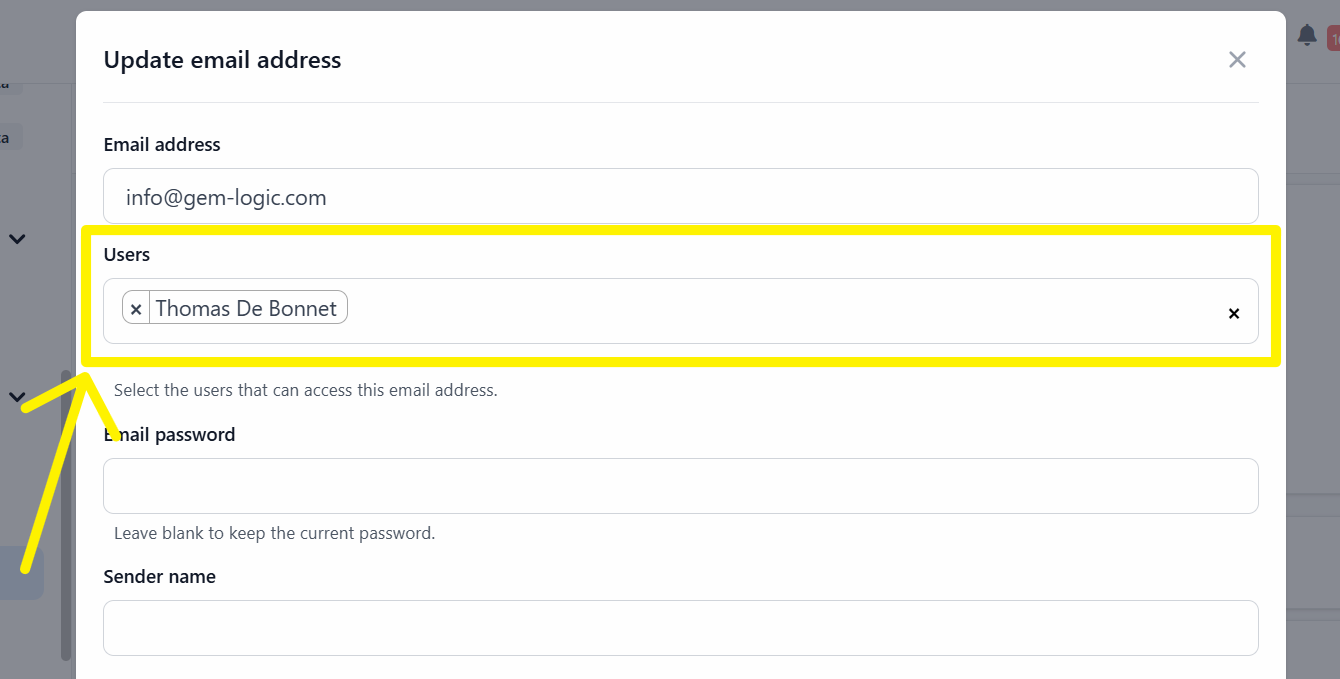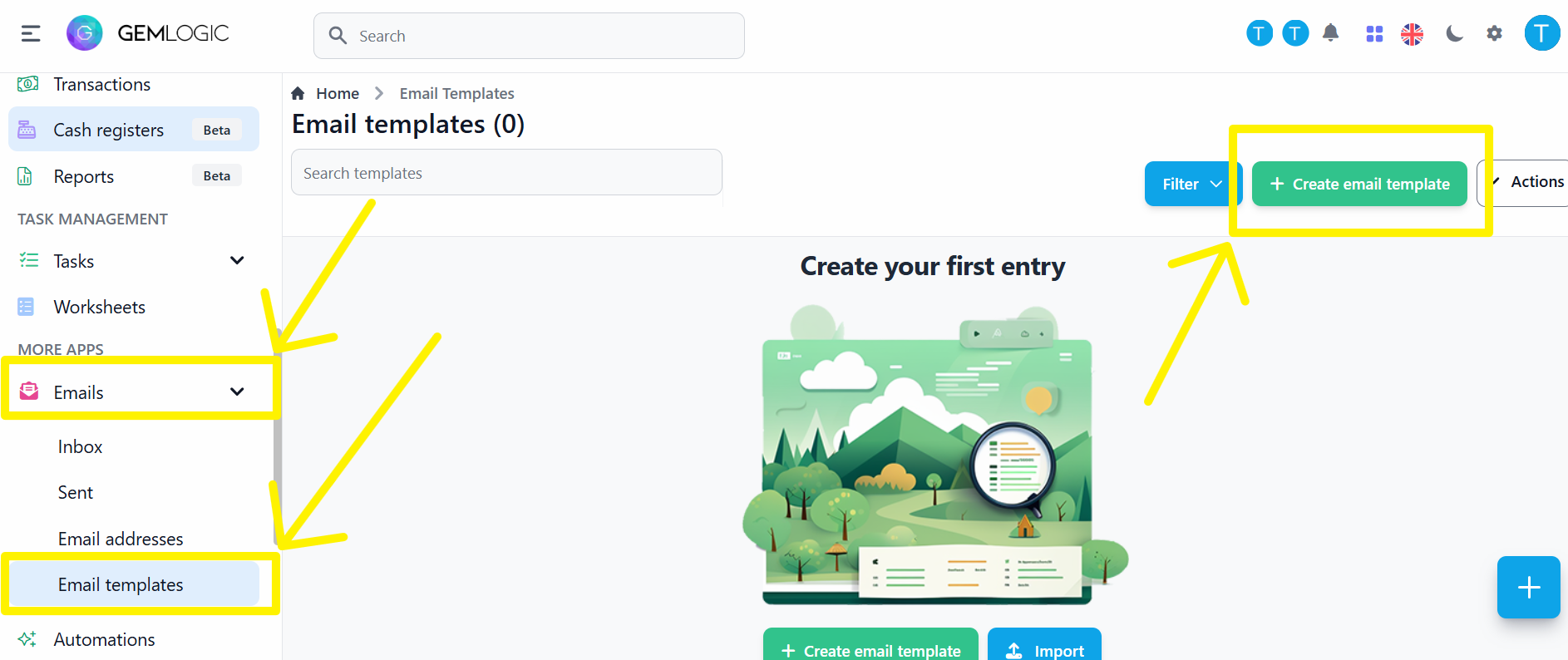Email setup and management
Allowing users to send with a specific email address
After you have added an email address, you can allow users to send emails using that address. To do this, you need to grant the user permission to send emails on behalf of the email address.
You can grant this permission by following these steps:
-
Go to Emails > Email addresses > Select the email address.

-
Click on Configure.

-
Click on Select users who can send emails.

-
Save the changes.

Now the selected users can send emails using the email address you have added.
Email templates
Email templates allow you to create and save emails that you can reuse to quickly send messages and for automations. You can create email templates for different types of messages, such as invoices, receipts, and notifications.
You can add email templates by following these steps:
-
Go to Emails > Email templates > Create email template.

-
Enter the template name, subject, and message.

-
You can also choose from the variable list. This will replace the variable with the according value when the email is sent.

-
Save the template. This will now allow you to select it when you are sending an email, and also when you are setting up automations.

Email security and anti-spam measures
To ensure your emails are delivered successfully and avoid being marked as spam, you should set up SPF and DKIM records for your domain. These records help authenticate your emails and protect your domain reputation.
SPF (Sender Policy Framework)
SPF is an email authentication method that allows you to specify which IP addresses are authorized to send emails on behalf of your domain. By setting up an SPF record, you can prevent spammers from using your domain to send unauthorized emails.
When sending mails from Gem Logic, you should include the following SPF record in your DNS settings:
v=spf1 include:gem-logic.com ~all
DKIM (DomainKeys Identified Mail)
If you have connected your email address through Google or Microsoft and you are using a custom domain, make sure to set up DKIM records for your domain. DKIM is an email authentication method that allows you to sign your emails with a private key, which can be verified by the recipient's email server.
Check with your email provider for instructions on how to set up DKIM records for your domain DNS and Google or Microsoft admin console.